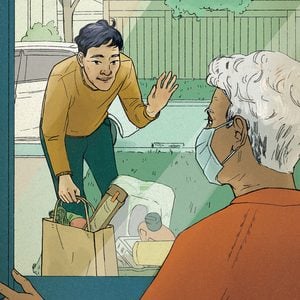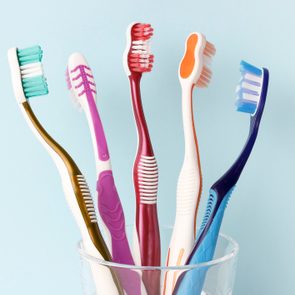It’s the middle of the night and you wake up groggily in the dark to go to the bathroom, only to hit your toe on the night table. Why are you in such pain? Is your toe broken?
Simply thinking about hitting your toe—commonly called “stubbing your toe”—can make you wince. We’re all familiar with how terrible it feels and the pain that lingers. So, we asked podiatrists about exactly what’s happening when you do it and how to know if you’ve actually injured yourself.
What does it mean to stub your toe?
A stubbed toe simply means that “in the course of walking, you hit your forefoot against an object while barefoot or wearing an open-toed shoe,” says Michael Trepel, DPM, a podiatrist in New York City. “It happens far more frequently than you realize, but you’re wearing shoes, so you don’t really feel it,” he says.
Most of these injuries occur at home, often in the dark, and especially in the middle of the night when you can’t see your surroundings and are in a sleep-induced haze. Other times, you might be getting up quickly—to answer the phone or attend to a pot on the stove—and you hit your foot on the leg of a chair or dresser, Dr. Trepel says. (Learn why wearing flip-flops are bad for your feet.)
Why does a stubbed toe hurt so much?
Your feet—and specifically your toes—are your body’s windows to the world. “There are more dense nerve endings around the toes because you need the tactile sense,” says Dr. Trepel. “Therefore, an injury around the tip of the toe generates more pain than if it happened on the heel,” he says.
What toes are most likely to be stubbed?
In the Pensacola, Florida practice of podiatrist Grace Torres-Hodges, “the great toe (hallux) and pinky toe (fifth digit) seem to be the ones that are most likely to be stubbed—and I’d say that the fifth toe is in the lead,” she says. (Check out 13 more foot health facts podiatrists want you to know.)
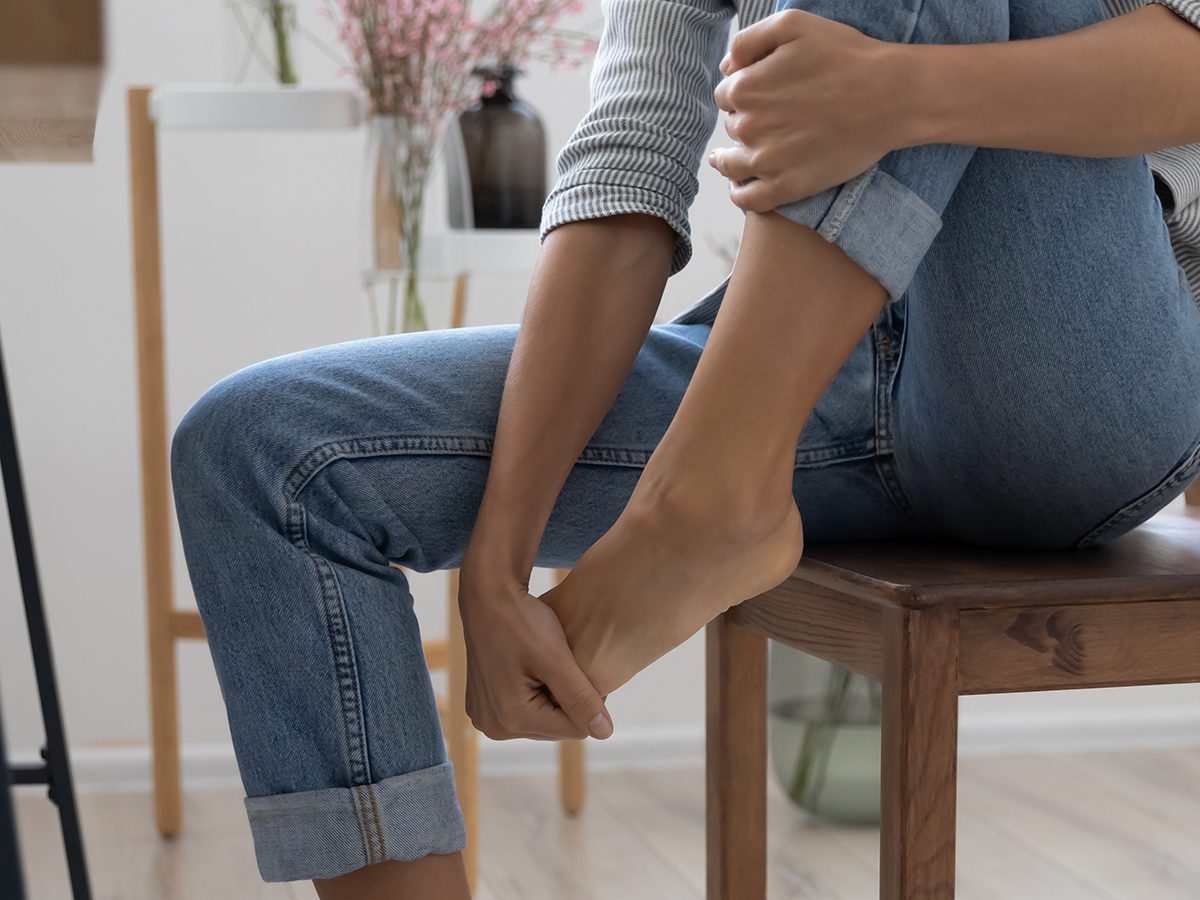
The consequences of stubbing your toe
There are several things that can happen when you stub your toe:
Temporary pain
The pain goes away in a minute or so, you have not injured yourself, and you can resume normal activities. “It’s similar to hitting your ‘funny bone’,” says Dr. Torres-Hodges.
Broken bone
“This usually occurs when something comes in between the space between toes and forcibly separates them, which can result in a fracture,” Dr. Trepel says. What can also happen is that you bang your foot so hard, the direct impact breaks a bone. If you’ve broken your toe, you may notice swelling around the toe or foot, discolouration like black or blue bruising around the area, and extreme pain when you walk or put weight on the toe.
Ligament tear
Ligaments are flimsier compared to other structures in feet, and they can tear more easily, Dr. Trepel says.
Skin laceration
The impact breaks the skin and exposes the underlying soft tissue, says Dr. Torres-Hodges. You should look for bleeding.
Jam
This refers to “one or more of the joints in the toe that have become compressed,” says Dr. Torres-Hodges.
Nailbed injury
If your nail bears the brunt of the impact, this can cause bleeding under the nail, called a subungual hematoma. “There is a lot of bacteria around the nails, and so there’s a risk of infection with nailbed injuries,” says Dr. Trepel. Make sure to keep the area clean. If there’s a blood blister under the nail, a podiatrist can drain it. Otherwise, you may lose the nail. (Here’s what it could mean if you have white spots under your nails.)
Bruising
Immediately after or the next morning, your toe may be swollen and painful. Within a couple of days after the hit, you may notice that your toe turns black and blue. “The fact that bruising appears two days later isn’t clinically significant. It does not mean you broke it,” Dr. Trepel says. (Find out the scientific reason you bruise easily.)
How to care for a stubbed toe
If the pain goes away quickly and there are no obvious changes to the nail or the toe does not look deformed, then you don’t have to do anything to treat it. Otherwise, Dr. Torres-Hodges recommends that you rest, ice, and elevate your toe. You can also wear comfortable flats and take an over-the-counter pain reliever, such as ibuprofen, if necessary.
However, if the toe is swollen, there’s a break in the skin where there’s bleeding, the toe looks crooked or deformed, or you’re in severe pain, or have diabetes or circulatory conditions, seek out medical care immediately. (Here are 50 more health symptoms you should never ignore.)
Tests and treatment for a stubbed toe
If your doctor is concerned about a break, they might confirm the fracture with an X-ray. If the bone is broken and displaced, the toe will look crooked, and your doctor may perform manipulations in order to get it back in alignment, Dr. Trepel says. Local anesthesia will help reduce discomfort during this process. Your toe will have to be immobilized, so it’ll either be taped to a neighboring toe or you may be fitted for a surgical shoe.
In some cases, an X-ray might not show a break but your toe can still be swollen and painful. “That might warrant a light compression dressing, splinting of the toe to the adjacent toe, ice, and OTC pain medication,” says Dr. Trepel.
If your injury is a laceration to the toe, then your doctor will repair the skin to close up the wound and may consider stitches, says Dr. Torres-Hodges. No matter what the fix, if you’re at the doctor for a stubbed toe, you don’t have to be embarrassed. “I always reassure patients that this is something we all do,” she says.
(Psst, here are some secrets podiatrists want you to know.)
How to prevent a stubbed toe
Stubbed toes happen, but there are a few things you can do to make them less likely:
- Make sure there’s a clear path to the bathroom in case you have to get up to go in the middle of the night.
- Move chairs and other objects out of the way of common walking paths.
- Wear closed-toe shoes.
- Place corner protectors around furniture legs.
The last word
A stubbed toe can be painful, but in most cases, the pain will quickly subside on its own. However, if you notice it lingers for several hours, this could be an indication that something is amiss and requires medical attention. Seek help from a medical professional to find the right course of action for your injury.
Next, check out six home remedies to soothe foot pain.
Fred Rogers, the beloved host of Mister Rogers’ Neighbouhood, is known for red cardigans, his love of children, and above all, for being kind. What’s less known about Mr. Rogers, however—and what seems a fitting story to tell on the 18-year anniversary of his passing—is how his hallmark empathy grew from a difficult and lonely childhood.
A challenging childhood
An only child, Rogers was overweight, shy, and sheltered. He also suffered from severe asthma, scarlet fever, and “every imaginable childhood disease,” as he put it in a 2002 interview. Such circumstances made it difficult for Rogers to fit in at his elementary school in industrial Latrobe, Pennsylvania, about an hour outside of Pittsburgh.
“I felt I had no friends,” Rogers said in a speech he gave at Saint Vincent College in April 1995. In the same speech, Rogers tells of a time when he was walking home from school and “a whole group of boys” began following him. As he walked the 11 blocks towards his house, the boys began taunting him, then chased after him as he ran away, shouting after him all the while: “Freddy, hey fat Freddy! We’re going to get you, Freddy!”
This is not the only time Rogers was bullied. One of his childhood classmates, Rudy Prohaska, remembers children at school “calling him names” and “bullying Fred,” according to Rogers’ biographer, Maxwell King, in The Good Neighbour: The Life and Work of Fred Rogers. “There were a lot of people in school who irritated me by the way they treated him,” Prohaska said. “I couldn’t take the name-calling and all that.”
Such experiences left Rogers traumatized. “I cried to myself whenever I was alone,” he said in the Saint Vincent College speech.
“It seems that Fred’s greatest adversity was loneliness,” Emily Uhrin, an archivist and researcher at the Fred Rogers Centre in Latrobe, Pennsylvania, tells Reader’s Digest. “He was overweight and shy and sometimes felt that people could not look beyond those things.”
The solitude and bullying made for a difficult childhood, but it also gave Rogers a deeper well of understanding towards others. He said in the Saint Vincent College speech that the negative experiences of his childhood made him “(seek) out stories of other people who were poor in spirit, and I felt for them.”
Coming out of his shell
From a young age, Rogers found his champions who saw past his awkwardness. Uhrin recounts a time when Rogers wanted to climb a stone wall at his grandfather’s farm but his mother and grandmother wouldn’t let him because they didn’t want him to get hurt. His grandfather stepped in and encouraged his grandson to climb the wall “because he needed to learn to do things for himself.”
Another person who advocated on Rogers’ behalf was one of his high school classmates, Jim Stumbaugh. “Jim was popular and Fred wasn’t,” Uhrin explains. But Rogers’ social standing improved when Stumbaugh became injured in a football game and Rogers delivered his homework to him at the hospital. Stumbaugh got to know a different side of Rogers through their interactions and when he returned to school from the hospital, he took Rogers under his wing. “Fred credited Jim with giving him the confidence to have a good high school experience,” Uhrin says. (Don’t miss the 100+ good news stories from around the world that will brighten your day.)
Channeling adversity into strength
As Stumbaugh looked out for Rogers, Rogers looked out for others. “Fred Rogers was intentional in all that he did,” Roberta Schomburg, executive director at the Fred Rogers Centre, tells Reader’s Digest. Junod observed something similar in his interactions. “When Fred asked you a question, he wanted to know the answer,” Junod says. “He made kindness a practice, not just something he talked about.”
Journalist Tom Junod, one of Rogers’ friends and the inspiration behind the 2019 movie, A Beautiful Day in the Neighbourhood, witnessed Rogers’ hallmark empathy firsthand and tells Reader’s Digest he considers it “one of the great honours and gifts of my life” that he was on the receiving end of Mr. Rogers’ kindness. “To be one of those people that he prayed for, one of those people that he cared for; I’ll never really understand how it happened but I’m really glad that it did,” he says. Junod says he felt Rogers’ love and concern in the form of countless letters, emails, and phone calls.
“Fred had a tuning fork from his own experiences that gave him insight into what other people needed,” Junod continues. “What sets Fred apart is that he wasn’t just a nice guy who helped out people with whatever they needed,” Junod explains “he was also a true authority figure who, in his own way, was a very powerful human being and he used that power to do good.”
The stories of the good in the world that Rogers accomplished are legend and he’s credited with teaching generations of children to act with empathy, be engaged listeners, and these other good neighbour lessons.
And to think that Rogers’ compassion, his understanding, and everything he came to mean to so many people around the world may never have been if not for a difficult and lonely childhood that shaped a boy into the man he became.
In the 2018 Mr. Rogers’ documentary Won’t You Be My Neighbour?, one of Rogers’ longtime friends and Mister Rogers’ Neighbourhood co-stars, David Newell, said it best: “I’ve often wondered if there hadn’t been a “fat Freddy,” would there have been a Mr. Rogers?”
Next, check out the 13 good neighbour lessons we learned from Mr. Rogers.
What you need to know about Canada’s ban on single-use plastics
Reader’s Digest Canada: How does a ban on single-use plastics work, and how much will that change our lives?
Robert Kitz: The ban will cover six specific items: plastic straws, grocery bags, stir sticks, six-pack rings, cutlery and takeout containers. These six were selected based on both the damage they cause to the natural environment and whether there’s a readily available alternative. So with straws, for example, there are cardboard options or metal options. The difference the ban will make on your day-to-day life depends on how reliant you are on these items, but largely, these are not direct-to-consumer products, so a lot of the onus will be on businesses.
What types of businesses will be affected the most?
A lot of these changes are going to be felt by the restaurant industry, which has already had a horrible year due to the pandemic. Offering takeout has been their lifeline, so I think there will have to be an effort to minimize the impact on them. Manufacturers of these items will also be affected, and ultimately there will be an impact on consumers, who will absorb some of the new costs.
David Suzuki believes that plastic beverage bottles should have made the list of banned products. Do you agree?
Plastic bottles are something we see a lot of, but they are relatively easy to recycle, which is not the case with the banned items.
The other thing is that, as well as the ban, the government’s play includes moving to a more circular economy. Currently, most plastic goes from manufacturer to consumer to landfill. We take our blue bins to the curb every week, but the reality is that only nine per cent of plastics in Canada get recycled. To improve that, we need to invest in infrastructure.
Are you surprised that the government decided to move forward with the ban now, given we’re still dealing with a pandemic?
This was a Trudeau re-election promise, so I’m not totally surprised. People want to think of COVID-19 as something that will soon be over, but that’s likely not the way it will play out. Also, plastic pollution has only gotten worse during the pandemic. My research shows that, of those we surveyed, 30 per cent are using more since last March: more takeout containers, more grocery delivery and gravitating towards packaged foods that bring a sense of safety.
Is plastic packaging actually safer?
Anything that protects the items you’re buying is going to add some degree of increased safety. At the same time, we’ve learned that surfaces are not as significant as we once thought in terms of virus transmission.
The plastics ban is the first step in the Canadian government’s plan to achieve zero plastic waste by 2030. Is that a realistic target?
I don’t want to be cynical, but I would say that it’s definitely an overly optimistic goal, much like the federal government’s target of being carbon neutral by 2050—particularly since Canada is part of a global supply chain. There’s only so much that we can do on our own as long as we’re importing products that are packaged in plastic.
What can Canadian individuals do to assist the effort?
One thing you can do is reduce your consumption of plastic. You probably have dozens of plastic bags under your sink. Recycling is better than landfills, but from a waste perspective it’s still the second-worst thing.
Next, find out what other countries are doing to tackle the plastic problem.

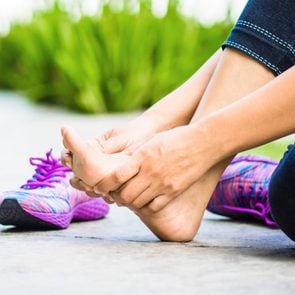
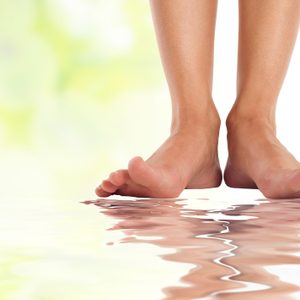 How to Treat and Cure Athlete's Foot" width="295" height="295" />
How to Treat and Cure Athlete's Foot" width="295" height="295" />